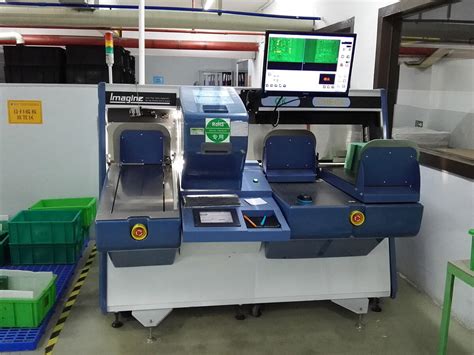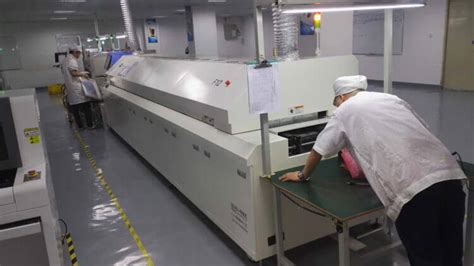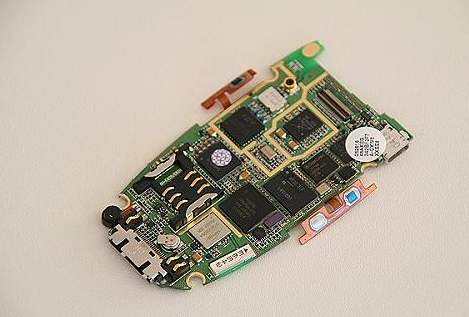challenges of high speed pcb design
Signal Integrity Issues in High-Speed PCB Design
When diving into the world of high speed PCB design, one of the most significant challenges you’ll encounter is maintaining signal integrity. As data rates climb and circuits become more complex, ensuring that signals travel from point A to point B without distortion or loss becomes increasingly tricky. This is where signal integrity issues come into play, and they can be a real headache if not addressed properly.
First off, let’s talk about crosstalk.
Imagine you’re at a crowded party, trying to have a conversation with a friend. The noise from other conversations around you makes it hard to hear each other clearly. In the realm of high-speed PCB design, crosstalk is the electrical equivalent of that background noise. When signals in adjacent traces interfere with each other, it can lead to data corruption and performance degradation. To mitigate crosstalk, designers often use techniques like increasing the spacing between traces or employing differential signaling, which helps cancel out the noise.
Another common issue is signal reflection.
Picture a tennis ball being thrown against a wall; it bounces back towards you. Similarly, when a signal encounters an impedance mismatch in a PCB trace, part of it gets reflected back towards the source. This can cause multiple problems, including signal distortion and timing errors. To combat this, impedance matching is crucial. By carefully designing the trace widths and using proper termination techniques, you can ensure that the signal travels smoothly without bouncing back.
Then there’s the matter of signal attenuation.
Over long distances, signals can weaken, much like how a shout becomes a whisper as you move further away from the source. High-speed signals are particularly susceptible to this because higher frequencies tend to lose energy more quickly. Using low-loss materials for the PCB and minimizing the length of high-speed traces can help reduce attenuation. Additionally, incorporating repeaters or signal boosters can also be effective in maintaining signal strength over longer distances.
Let’s not forget about electromagnetic interference (EMI).
High-speed signals can act like tiny radio transmitters, emitting electromagnetic waves that can interfere with other components on the board or even with nearby electronic devices. Shielding and proper grounding are essential strategies to minimize EMI. By enclosing sensitive components in metal shields and ensuring a solid ground plane, you can significantly reduce the risk of interference.
Moreover, power integrity is another critical aspect that ties into signal integrity.
Fluctuations in the power supply can introduce noise into the signals, leading to errors. Ensuring a stable power supply with adequate decoupling capacitors and using power planes instead of traces can help maintain power integrity. This, in turn, supports better signal integrity by providing a clean and stable environment for the signals to travel through.
In addition to these technical challenges, there’s also the human element.
High-speed PCB design requires a deep understanding of both the theoretical and practical aspects of signal integrity. It often involves a lot of trial and error, simulations, and testing. Collaboration with experienced engineers and staying updated with the latest design tools and techniques can make a significant difference.
In conclusion, signal integrity issues in high-speed PCB design are multifaceted and require a comprehensive approach to address effectively. From crosstalk and signal reflection to attenuation and EMI, each challenge demands careful consideration and strategic solutions. By understanding these issues and employing best practices, you can navigate the complexities of high-speed PCB design and achieve reliable, high-performance circuits.

Managing Electromagnetic Interference in High-Speed Circuits
When it comes to high-speed PCB design, managing electromagnetic interference (EMI) is like trying to keep a lid on a boiling pot. It’s a constant battle, and if you’re not careful, things can get out of hand pretty quickly. High-speed circuits are notorious for generating EMI, which can wreak havoc on your design if not properly managed. So, how do you keep everything under control? Let’s dive into some strategies and tips that can help you manage EMI in high-speed circuits.
First off, it’s crucial to understand that EMI is essentially unwanted noise that can interfere with the proper functioning of your circuit.
This noise can come from various sources, including the components themselves, the layout of the PCB, and even external factors like nearby electronic devices. The key to managing EMI is to minimize these sources of noise and to shield your circuit from external interference.
One of the most effective ways to reduce EMI is through proper PCB layout.
This might sound like a no-brainer, but you’d be surprised at how many issues can be traced back to poor layout decisions. For starters, keep your high-speed signal traces as short as possible. The longer the trace, the more it acts like an antenna, picking up and radiating noise. Additionally, try to route high-speed signals on inner layers of the PCB, sandwiched between ground planes. This not only helps to shield the signals from external noise but also reduces the loop area, which in turn minimizes EMI.
Speaking of ground planes, they are your best friend when it comes to managing EMI.
A solid ground plane provides a low-impedance path for return currents, which helps to reduce noise. Make sure to use a continuous ground plane and avoid splitting it up with signal traces or other components. If you must split the ground plane, use stitching vias to connect the different sections and maintain a low-impedance path.
Another important aspect of managing EMI is decoupling.
Decoupling capacitors are used to filter out high-frequency noise and provide a stable power supply to your components. Place these capacitors as close as possible to the power pins of your ICs. The closer they are, the more effective they’ll be at filtering out noise. Additionally, use a mix of different capacitor values to cover a wider range of frequencies.
Shielding is another technique that can help to reduce EMI.
This involves enclosing your high-speed circuits in a metal shield to block external noise and prevent your circuit from radiating noise. While this can be effective, it’s not always practical, especially in compact designs. In such cases, consider using ferrite beads or chokes to filter out high-frequency noise on power and signal lines.
Finally, don’t forget about the importance of proper termination.
High-speed signals can cause reflections if not properly terminated, leading to increased EMI. Use appropriate termination techniques, such as series or parallel termination, to match the impedance of your signal traces and minimize reflections.
In conclusion, managing EMI in high-speed PCB design is a multifaceted challenge that requires careful consideration of various factors. By paying attention to your PCB layout, using solid ground planes, properly decoupling your components, and employing shielding and termination techniques, you can keep EMI under control and ensure the reliable performance of your high-speed circuits. It’s a bit like juggling, but with practice and attention to detail, you can keep all the balls in the air and avoid any nasty surprises.

Thermal Management Challenges in High-Speed PCB Layouts
When it comes to high-speed PCB design, one of the trickiest hurdles to overcome is thermal management. As electronic devices become more powerful and compact, the heat they generate can become a significant issue. If not properly managed, this heat can lead to performance degradation, component failure, and even complete system breakdowns. So, let’s dive into the thermal management challenges that come with high-speed PCB layouts and explore some strategies to tackle them.
First off, it’s important to understand why thermal management is such a big deal in high-speed PCB design.
High-speed circuits often operate at higher frequencies and voltages, which naturally generate more heat. This heat needs to be dissipated efficiently to maintain the reliability and longevity of the components. However, the compact nature of modern PCBs means there’s less room for heat to escape, making thermal management a critical aspect of the design process.
One of the primary challenges in thermal management is the uneven distribution of heat across the PCB.
High-speed components like processors and memory modules tend to generate more heat than other parts of the board. This creates hotspots that can lead to thermal stress and potential damage. To address this, designers often use thermal vias, which are small holes filled with conductive material that help transfer heat from the surface of the PCB to the inner layers or to a heat sink. While effective, this method requires careful planning to ensure that the vias are placed in optimal locations without interfering with the electrical performance of the board.
Another challenge is the selection of materials.
The materials used in the PCB substrate and components can significantly impact thermal performance. For instance, materials with high thermal conductivity, like certain types of ceramics or metal-core PCBs, can help dissipate heat more effectively. However, these materials can also be more expensive and harder to work with, adding another layer of complexity to the design process. Balancing cost, manufacturability, and thermal performance is a delicate act that requires careful consideration.
Moreover, the layout of the PCB itself plays a crucial role in thermal management.
Components that generate a lot of heat should be placed in areas where airflow is maximized, such as near the edges of the board or in line with cooling fans. Additionally, spreading out high-power components can help distribute heat more evenly, reducing the risk of hotspots. However, this needs to be balanced with the electrical requirements of the design, as spreading components too far apart can lead to signal integrity issues.
Speaking of airflow, incorporating active cooling solutions like fans or heat sinks can also be beneficial.
While these solutions can significantly improve thermal performance, they come with their own set of challenges. Fans, for example, require additional power and space, and they can introduce noise and vibration that might affect sensitive components. Heat sinks, on the other hand, need to be carefully attached to ensure good thermal contact without damaging the PCB or components.
In addition to these physical solutions, simulation tools can be invaluable in addressing thermal management challenges. Thermal simulation software allows designers to model the heat distribution and identify potential problem areas before the PCB is even manufactured. This can save a lot of time and money by allowing for adjustments to be made early in the design process.
In conclusion, thermal management in high-speed PCB design is a multifaceted challenge that requires a combination of careful planning, material selection, and innovative solutions. By understanding the complexities involved and leveraging both physical and simulation-based strategies, designers can create high-speed PCBs that not only perform well but also stand the test of time.
Ensuring Power Integrity in High-Speed PCB Designs
Ensuring power integrity in high-speed PCB designs is like trying to keep a smooth ride on a roller coaster. It’s thrilling, challenging, and requires a lot of attention to detail. When you’re dealing with high-speed circuits, even the tiniest hiccup in power delivery can lead to significant issues, from signal degradation to complete system failure. So, how do you keep everything running smoothly? Let’s dive into some of the key challenges and how to tackle them.
First off, one of the biggest hurdles is managing the power distribution network (PDN).
In high-speed designs, the PDN needs to be rock-solid. Any fluctuations in voltage can cause timing errors and signal integrity problems. To ensure a stable PDN, you need to focus on minimizing impedance. This often means using multiple layers in your PCB to create a low-impedance path for power delivery. Think of it like building a multi-lane highway for your power signals; the more lanes you have, the smoother the traffic flow.
But it’s not just about adding more layers.
You also need to pay attention to the placement of your decoupling capacitors. These little components are like shock absorbers for your power supply, smoothing out any ripples and ensuring a steady flow of power. The trick is to place them as close as possible to the power pins of your ICs. This minimizes the inductance and ensures that the capacitors can do their job effectively.
Another challenge is dealing with ground bounce and noise.
In high-speed designs, switching currents can cause significant voltage drops across the ground plane, leading to ground bounce. This can be particularly problematic in multi-layer PCBs where different layers might have different ground potentials. To mitigate this, you need to ensure a solid ground plane and use techniques like stitching vias to connect different ground layers. This helps to equalize the ground potential and reduce noise.
Thermal management is another critical aspect.
High-speed circuits tend to generate a lot of heat, and if you don’t manage this effectively, it can lead to thermal runaway and component failure. Using thermal vias and heat sinks can help dissipate heat more effectively. Additionally, paying attention to the layout and ensuring that high-power components are not clustered together can help in spreading the heat more evenly across the board.
Signal integrity is closely tied to power integrity, and issues in one can often lead to problems in the other.
For instance, if your power supply is noisy, it can couple into your signal lines and cause jitter or crosstalk. To avoid this, you need to ensure proper isolation between power and signal traces. Using techniques like differential signaling and controlled impedance traces can help in maintaining signal integrity.
Finally, simulation and testing are your best friends.
Tools like SPICE and EM simulators can help you model your PDN and identify potential issues before you even fabricate your PCB. Once you have your board, thorough testing is crucial. Using oscilloscopes and network analyzers can help you measure power integrity and ensure that your design meets the required specifications.
In conclusion, ensuring power integrity in high-speed PCB designs is a complex but manageable task. By focusing on a stable PDN, effective decoupling, solid grounding, thermal management, and thorough testing, you can overcome the challenges and ensure a smooth ride for your high-speed circuits. It’s a bit like being a conductor of an orchestra; you need to make sure every section is in harmony to create a flawless performance.





